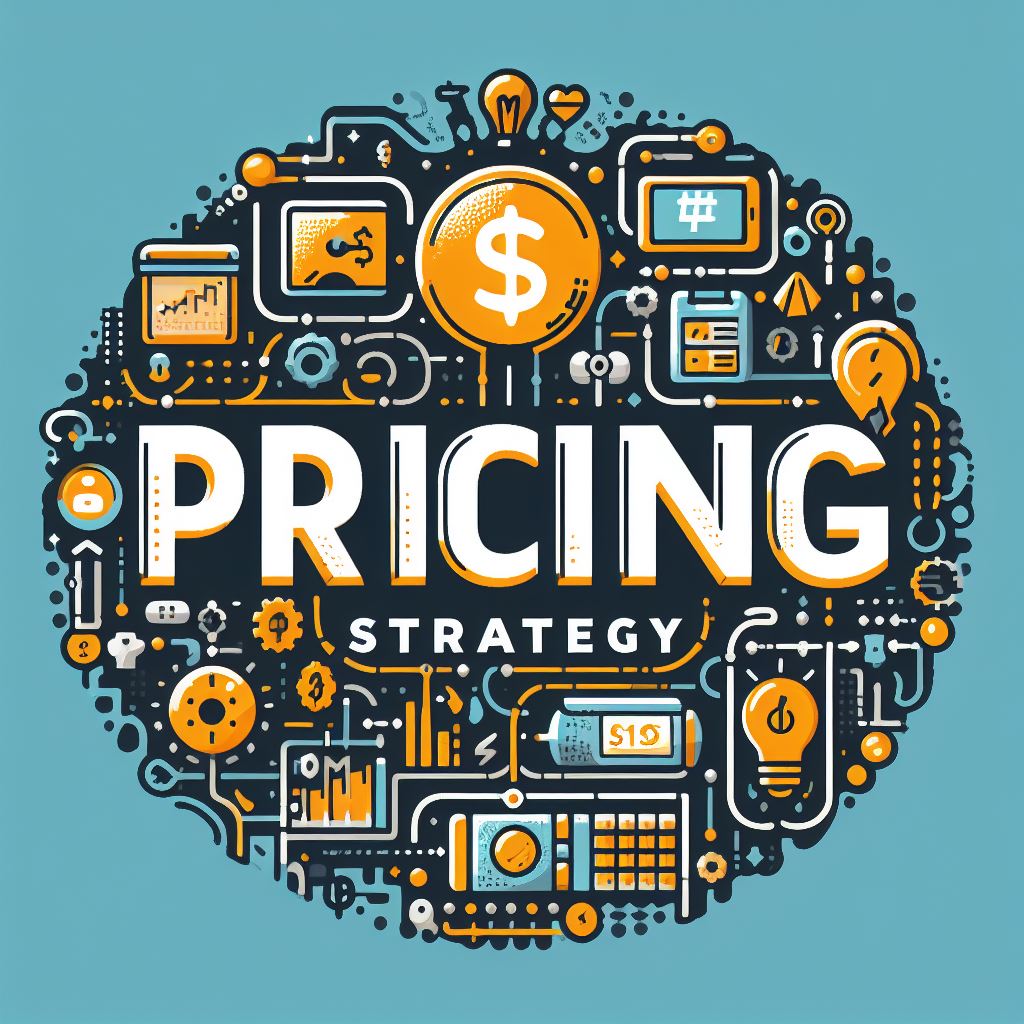
Pricing strategy is the deliberate approach a business takes to set and manage the prices of its products or services. In the dynamic world of commerce, finding the right balance in pricing is like walking a tightrope. Setting your prices too high can scare potential customers away, while pricing them too low might leave you struggling to cover your costs. It’s a delicate dance that can make or break your business.
This comprehensive guide is designed to provide you with the knowledge and strategies necessary for making informed pricing decisions that not only satisfy your customers but also bolster your profitability.
Feel free to bookmark this guide, and let’s delve into the world of pricing to secure your business’s revenue potential.
TABLE OF CONTENTS
- What Is a Pricing Strategy?
- Pricing Strategy Types
- Pricing Strategy Examples
- Pricing Strategy in Marketing
- Industry-Based Pricing Strategy
- How to Develop an Effective Pricing Strategy
- Summary
What Is a Pricing Strategy?
Pricing Strategy Definition
A pricing strategy is a method used to determine the optimal price for a specific product or service.
An effective pricing strategy takes into account various business factors, including revenue goals, target audience, brand positioning, and product attributes. It is also influenced by external factors such as product demand, competitor pricing, and industry trends.
The Importance of a Winning Pricing Strategy
The primary aim of gaining a deep understanding of different pricing strategies and selecting the right one is to establish customer trust and maximize revenue from the product or service.
A robust pricing strategy not only communicates value but also encourages customers to make a purchase while instilling confidence in the product. Consequently, the ultimate goal of comprehending pricing models is to build customer confidence and optimize revenue for the product or service.
Pricing Strategy Types
The art of pricing is a critical factor in the business landscape. It shapes not only a company’s revenue but also its market positioning and customer relationships. Companies have a range of pricing strategies to choose from, each with its unique advantages and drawbacks. Let’s delve into the diverse landscape of pricing strategies to better understand the various approaches.
1. Hourly Pricing Strategy
Hourly pricing strategy involves selling blocks of time in exchange for an hourly rate.
This pricing model is commonly employed by a variety of professionals, including freelancers, consultants, lawyers, and outsourced vendors. It offers flexibility and can be a preferred choice when the scope of work or project requirements may vary. Clients pay for the actual hours worked, and freelancers benefit from the potential to earn more if projects run longer than initially estimated.

Hourly pricing has the advantage of potentially boosting freelancer earnings when projects extend beyond initial estimates, benefitting them financially. Clients often find hourly rates psychologically appealing, as they provide transparency and control over work hours. For instance, offering a project at 40 hours billed at $100 per hour may seem more attractive than a fixed price of $4,000. However, this model can lead to misaligned incentives between freelancers and clients, making monitoring work hours difficult and potentially encouraging billing for time over efficiency.
2. Project-Based Pricing Strategy
A predetermined, fixed fee for each individual project.
Project-based pricing strategy is a common strategy utilized by freelancers and outsourcing vendors. This pricing approach revolves around estimating the tasks involved in a project and the expected time for completion, allowing freelancers to set a predetermined price based on this estimate. This method may also incorporate bonuses for early project completion.
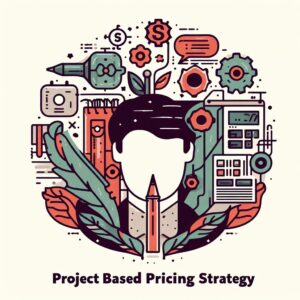
One notable advantage of project-based pricing is its convenience for clients, who have clarity regarding the project’s cost from the outset. This transparency in pricing helps establish trust between the parties, as there is no ambiguity surrounding hourly billing. However, there are disadvantages to consider. Freelancers undertaking project-based pricing are at risk, as the actual project duration may exceed their initial estimates, potentially affecting their earnings. “Furthermore, it’s important to account for a cognitive bias known as the ratio bias. Clients may perceive a project with a fixed price, such as a $10,000 project, as more expensive than an hourly pricing model, even if the latter translates to $100 per hour for a project estimated to take 100 hours.
3. Premium Pricing Strategy
Pricing at a relatively high level compared to competitors to position the product as high-end, elite, and prestigious.
Premium pricing strategy, also known as luxury or prestige pricing, relies on customer brand perception rather than the product’s inherent value or production cost. Commonly used by industry leaders like Louis Vuitton, Hermes, Apple, and Tesla, this strategy aims to establish and sustain high price points. Typically chosen by brands with strong customer loyalty and high demand, it capitalizes on customers’ willingness to pay a premium for perceived prestige.

Premium pricing offers advantages, including high profit margins due to lower production costs compared to sales prices, fostering a prestigious and exclusive brand image. This can create a competitive advantage, often called a ‘moat.’ However, it has drawbacks like price inelasticity when the brand perception isn’t strong, potential market size limitations, and exposure to competition and pricing pressures in competitive industries.
4. Skimming Pricing Strategy
Setting a high initial price for a product and lowering the price over time.
The rationale behind skimming pricing is to maximize revenue during the initial phase when a product is new and highly enticing, capitalizing on the peak of excitement surrounding it. Later, the aim is to broaden the product’s appeal to a wider target audience by lowering its price. This pricing strategy is frequently employed by major tech companies such as Apple, Samsung, and Sony during new product launches.
This strategy is recommended under the following conditions:
- Market Competition: Skimming pricing is most effective in markets with fewer competitors, making it less suitable in saturated markets where customers heavily compare prices of similar products.
- Innovation and Customer Need: It works best when launching an innovative product that meets a customer need without a satisfactory existing solution.
- Customer Willingness to Pay: It’s ideal when the market includes early adopters willing to pay a premium to be among the first to own the product.
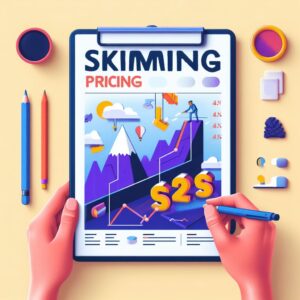
The pros of this pricing strategy involve facilitating rapid revenue growth and establishing strong branding by connecting a high price to product quality. It also provides the flexibility to motivate resellers with increased commissions for product sales. On the other hand, the cons include the challenge of justifying the initially high product price, particularly in competitive markets where it might be challenging to implement. Furthermore, it can incentivize competitors to promote similar products or services at lower price points, potentially affecting market dynamics.
5. High-Low Pricing Strategy
A high initial price, lowering the price over time according to freshness (for food items) or product relevance (for fashion), relying on discounts and end-of-season sales.
This pricing strategy is frequently employed by retail companies offering seasonal or rapidly evolving consumer products, such as fashion. It hinges on strategic sales promotions aimed at driving purchases, fostering a sense of urgency (to acquire the product while it’s on promotion), and enticing customers into the store, with the hope that they will make additional purchases and expand their shopping basket.
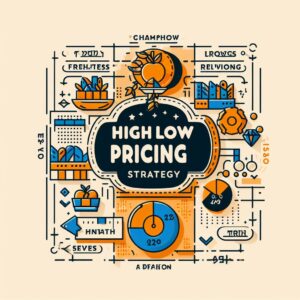
This pricing approach offers several advantages, including the potential for increased revenue by appealing to a broader, price-sensitive audience and generating customer excitement with “buy before it’s gone” promotions. It also boosts traffic, both in physical and online stores, enhancing brand exposure and facilitating ancillary sales. However, it requires substantial marketing and advertising expenses and can encourage customers to wait for discounts, affecting immediate sales. Discounted items may be perceived as lower quality, potentially influencing the overall perception of the store’s quality.
6. Penetration Pricing Strategy
Setting a lower price when first launching a product or entering a new market.
Penetration pricing startegy aims to gain a competitive edge by offering lower prices, quickly expanding market share. While it may entail initial losses, it’s suitable for financially robust companies. The focus is on enhancing customer satisfaction to justify future price increases and attract new customers at higher price tiers. This strategy is common in fiercely competitive B2C markets with numerous alternatives, where attracting new customers is challenging without competitive pricing.
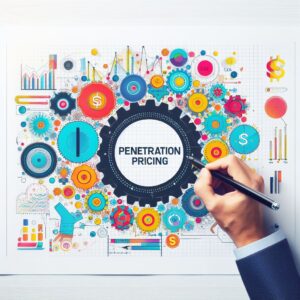
The pros of penetration pricing startegy lie in its ability to facilitate market entry and drive initial market share growth. On the other hand, the cons include the challenge of building a loyal customer base, as initial customers are often price-sensitive and may switch at different price points. Additionally, penetration pricing is a temporary approach that can result in losses or inadequate short-term revenue.
7. Bundle Pricing Strategy
Selling two or more products together in one bundle at a lower or more attractive price than selling each product separately.
This technique is widely adopted in retail, eCommerce, and SaaS pricing strategies. Bundling is particularly effective when a company offers multiple products or services or seeks to enhance the perceived value of add-on applications. By bundling complementary products, it ensures customers receive the functionality they require while extracting maximum value from the company’s portfolio. This enriched customer experience often results in increased loyalty.
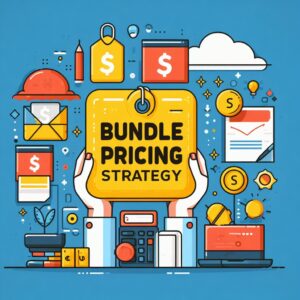
Bundle pricing strategy increases the average order value, encourages product discovery, and lowers marketing costs by marketing bundles as a single product. However, it risks cannibalization when individual products are more profitable and may be seen as offering lower value, especially with less popular items in the bundle.
8. Geographic Pricing Strategy
Charging different prices for the same product or service based on the customer’s geographic location
Geographic pricing strategy typically takes into account factors such as transportation costs, local taxes, benchmarking against local market pricing, and the willingness of customers to pay. This strategy is employed to enhance profit margins and capitalize on sales potential in competitive markets.
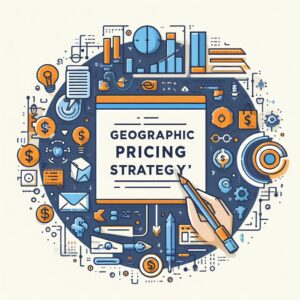
This pricing model presents notable advantages, including the flexibility it offers in entering new markets and the ability to optimize profitability in different geographic regions. However, it carries the potential downside of generating customer resentment and tarnishing a brand’s reputation if the price gap between locations is perceived as too significant and unfair.
9. Cost-Plus Pricing Strategy
Adding a certain percentage markup to the product cost to determine the final selling price.
Cost + Profit Margin = Product Price
Cost-plus pricing strategy relies on two key parameters: the product cost, representing its production expenses, and the desired profit margin. This pricing strategy aims to ensure that each product sold not only covers its expenses but also generates the target profit margin. While cost-plus pricing is widely adopted for physical goods, it may not be as well-suited for products or services where the selling price significantly exceeds the production cost, such as SaaS companies.
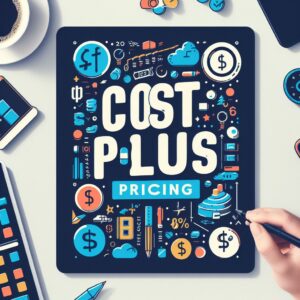
While cost-plus pricing startegy simplifies cost coverage for small businesses, it may lead to inefficiency and reduced profitability due to a guaranteed rate of return, discouraging cost-cutting efforts and market research. This inward-facing approach hinders understanding of customer value and can result in declining demand and missed revenue opportunities.
10. Competition-Based Pricing Strategy
Setting the product price based on competitor pricing in the market.
Competition-based pricing strategy is great for businesses in markets with lots of alternatives and low brand loyalty. It sets prices by looking at what similar products cost, without worrying about expenses or demand. In markets where even small price changes can affect customer choices, this strategy is common. According to McKinsey research, a tiny 1% price increase can boost profits by 8.7%. Prices may be similar to, lower than, or higher than competitors’ prices, but the differences are usually small.

Using a competition-based pricing strategy allows for quick adjustments in pricing and is easy to implement without complex calculations. However, it tends to ignore product demand, assuming competitors have priced correctly, and can result in delayed responses to market changes, like sudden increases in demand or evolving customer preferences.
11. Value-Based Pricing Strategy
Price is set according to the customer’s perceived value of the product.
Rather than focusing on internal costs or comparing with competitors, value-based pricing strategy shifts the focus outward to customer demand. Pricing is determined by what customers are willing to pay based on the value they receive from the product or service.
Data regarding customer value perception is collected through direct feedback, surveys, interviews, and analysis of actual customer usage patterns. Value-based pricing is commonly employed in industries like fashion, SaaS, cosmetics, and technology.

The value-based pricing strategy has advantages, allowing for a high initial price if the perceived product or service value is high, and it’s adaptable over time. It’s driven by internal data, fostering a focus on high-quality products, and promotes a customer-centric approach, improving product retention. However, it requires time and resources for customer assessments, making it a ongoing and resource-intensive process.
12. Dynamic Pricing Strategy
Selling a product at a variable, flexible price.
Dynamic pricing strategy leverages variable pricing, departing from fixed pricing models, allowing marketers to tailor prices based on changing market dynamics, competitive factors, and shifts in demand. This approach is commonly adopted by companies operating in the travel sector (including flights, hotels, and vacation packages), transportation, and e-commerce industries.
This pricing model is typically implemented through the development of internal algorithms or by utilizing specialized dynamic pricing software like Omnia Retail, PriceLabs, and Quicklizard.
There are three types of dynamic pricing:
- Dynamic Pricing Based on Groups: This approach involves using two or more price types for the same product, determined through algorithms and statistical analysis. Prices vary based on factors such as customer location, device type (e.g., iPhone users in the US tend to have a higher average income than Android users), demographic information (including age, gender, religion, income, education, and employment), and previous usage patterns.
- Dynamic Pricing Based on Time: In this method, prices fluctuate based on the time of purchase. When demand is high, prices increase, and when it decreases, prices drop. Time-based pricing is often used to encourage immediate purchases by customers.
- Dynamic Pricing Based on Peaks: This strategy involves adjusting prices according to specific periods of high demand, whether it’s during a particular month, season, or date. Prices rise in response to increased demand during these peak periods.
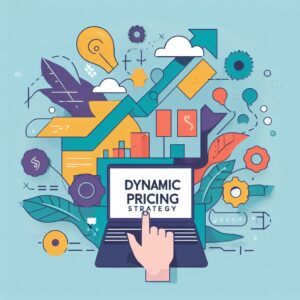
Dynamic pricing strategy has its benefits, such as offering flexibility for employee incentives during high-demand times and ensuring sales in low-demand situations through price adjustments and promotions. However, it can lead to lower customer trust due to inconsistent pricing and, if overused, might harm brand loyalty and prompt customers to look for alternatives.
13. Freemium Pricing Strategy
A free, basic version of a product and one or more paid versions including additional capabilities or expanding existing product capabilities.
This pricing strategy approach is commonly used for SaaS products and acts as a “foot in the door” strategy. The objective is to make customers fond of the product, foster dependence, and entice them to extend its capabilities. This method aligns well with a subscription model centered on nurturing customer relationships and monetizing over time. Such companies prioritize recurring revenue generation while keeping fixed product costs low or nonexistent.
While a freemium pricing strategy can stimulate substantial user base expansion, the majority of users typically do not transition to the paid version. On average, the conversion rate from free to paid hovers around 2-5%.
The key freemium pricing strategy metrics are:
- Customer Acquisition Cost (CAC): This represents the total expenses related to acquiring a new customer, calculated by dividing marketing and sales costs by the number of acquired customers. For example, if a company spent $100 on Google s and acquired 10 paying customers, the CAC is $10.
- Customer Lifetime Value (CLV): CLV estimates the total revenue expected from a single customer over the entire customer relationship. If the CLV is $1,000 and the CAC is $800, it indicates economic viability for the product.
There are four freemium pricing strategies:
- Traditional Freemium: Offers a limited free version alongside a paid one, aiming to convert free users into subscribers.
- Freeware-Based Freemium: Provides the product for free and generates revenue through add-on sales.
- Network Effect-Based Freemium: Offers the product for free and monetizes through advertising or user data sales.
- Platform-Based Freemium: Serves as a platform for other products, generating revenue through third-party revenue sharing.
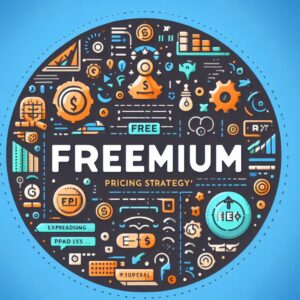
The freemium pricing strategy offers distinct advantages, including attracting a large user base with the appeal of “free,” building a user database, and enabling differential pricing. However, it comes with notable downsides, such as the potential to strain finances by providing free services to a broad user base and the risk of incurring higher expenses for supporting free users than revenue from paid users.
Pricing Strategy Examples
Mastering the art of pricing is fundamental for businesses to attain their financial targets and serve diverse customer needs. In this overview, I delve into a spectrum of real-world pricing strategy examples with practical applications.
1. Hourly Pricing Strategy Example: Upwork

An hourly pricing strategy example can be found on platforms like Upwork, where freelancers set their rates. For example, an SEO expert that charges $67 per hour for his service.
2. Project-Based Pricing Strategy Example: Fiverr
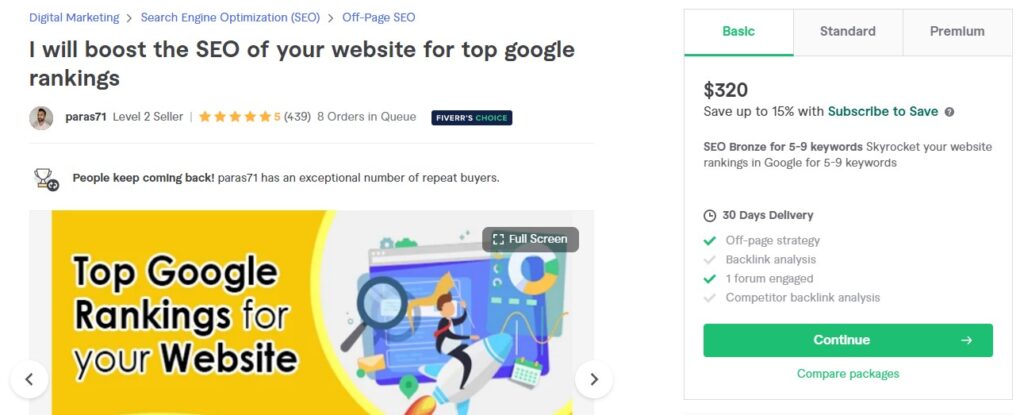
Fiverr is a great example of a project-based Pricing Strategy. On Fiverr, freelancers must create detailed project proposals. For instance, an SEO service provider may offer their services with a project proposal priced at $320.
3. Premium Pricing Strategy Example: Hermes

This Hermes product, a prime premium pricing strategy example, is marketed at $22,700. It’s renowned for its luxury and prestige, catering to customers who appreciate exclusivity, quality, and unique design. This strategy emphasizes the product’s premium status, appealing to those seeking top-tier quality and distinction.
4. Skimming Pricing Strategy Example: Apple
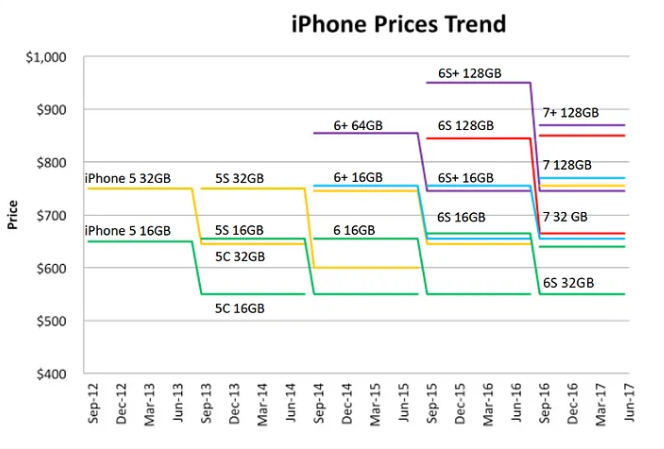
The iPhone 13, a notable skimming pricing strategy example, made its debut in the US in 2021 with an initial price tag of $799. However, by 2023, the price has significantly reduced to $599, representing a substantial drop of about 25%. This strategic price reduction aims to broaden the product’s appeal beyond Apple’s early adopters, who are typically willing to pay a premium for the latest product offerings. By employing a skimming pricing strategy, Apple maximizes early profits from enthusiastic customers and gradually lowers the price to reach a wider consumer base as time progresses.
5. High-Low Pricing Strategy Example: Adidas

The Adidas end-of-season sale for women’s sportswear shoes serves as a straightforward example of the high-low pricing strategy. At the start of the season, the original price of ‘Swift Run 1.0 Shoes’ stood at $90. However, as the season winds down, Adidas implements a substantial discount of 40%, bringing the price down to just $50. This strategic approach effectively captures the attention of cost-conscious consumers, offering a compelling discount on a popular product. It showcases how high-low pricing can stimulate sales and incentivize shoppers to take advantage of reduced prices during specific promotional periods.
6. Penetration Pricing Strategy Example: Netflix & Diseny

Netflix executed an example of a penetration pricing strategy, evident in their pricing history. They initially introduced their premium package at a competitive rate of $11.99 per month in April 2013, maintaining this price point for four years. Subsequently, they incrementally raised the price every two years, reaching $19.99 per month in January 2022.
In the US streaming market, Netflix held a dominant position, backed by strong brand equity and a dedicated customer base. When Disney decided to introduce its Disney+ streaming service in late 2019, it employed a penetration pricing strategy, offering it at $6.99 per month, in contrast to Netflix, which charged $12.99 per month for its standard package.
7. Bundle Pricing Strategy Example: Microsoft
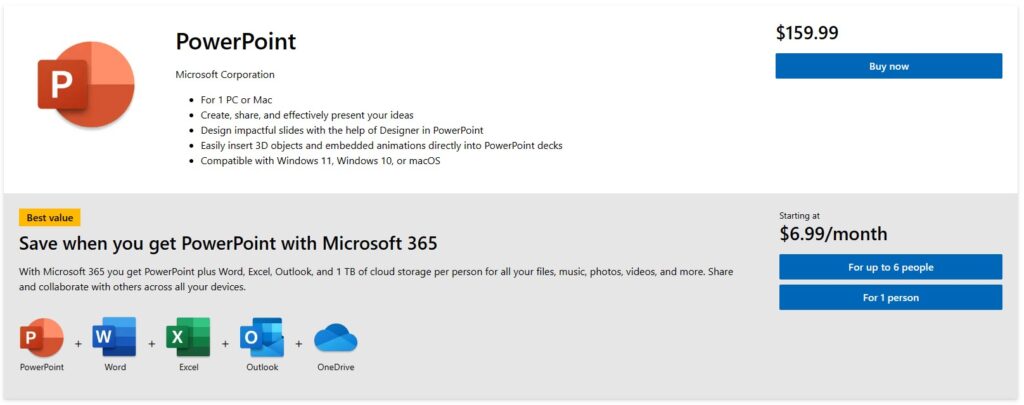
Microsoft provides a compelling bundle pricing strategy example through its offerings. For those seeking a one-time purchase, Microsoft offers PowerPoint software at a fixed cost of $159. However, they also present an enticing alternative – the Microsoft 365 bundle. This comprehensive package includes PowerPoint, Word, Excel, and an array of other applications, available for a monthly subscription of $6.99 or a discounted annual rate of $69.99.
This strategic approach caters to a diverse audience, allowing users to select the pricing model that best aligns with their needs and preferences, whether it’s a single software purchase or a cost-effective subscription providing access to an entire suite of tools.
8. Geographic Pricing Strategy Example: Mcdonald’s
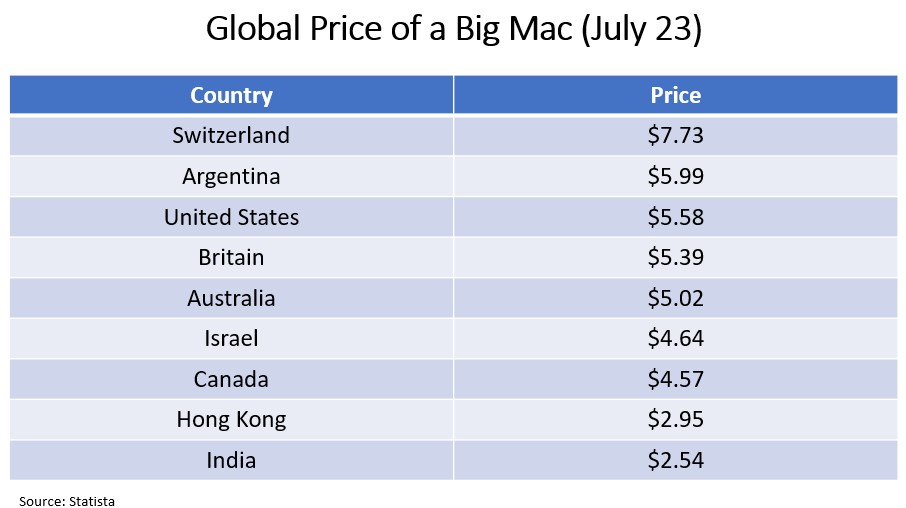
McDonald’s employs a geographic pricing strategy that reveals varying pricing for its iconic Big Mac in different countries. Based on Statista research as of June 23, at the upper end of the spectrum, Switzerland boasts the highest price for the Big Mac at $7.73, while the United States offers a moderately priced Big Mac at $5.58. At the other extreme, India offers the lowest price, coming in at $2.54.
This considerable gap in pricing reflects a substantial difference of approximately 47% between the most expensive Big Mac in Switzerland and the United States. Additionally, there is an even more significant difference of approximately 204% between the most expensive Big Mac in Switzerland and the most affordable one in India.
McDonald’s adapts its pricing to local economic conditions, consumer preferences, and operating costs, resulting in these noticeable disparities in Big Mac prices across the globe.
9. Cost-Plus Pricing Strategy Example: Adidas
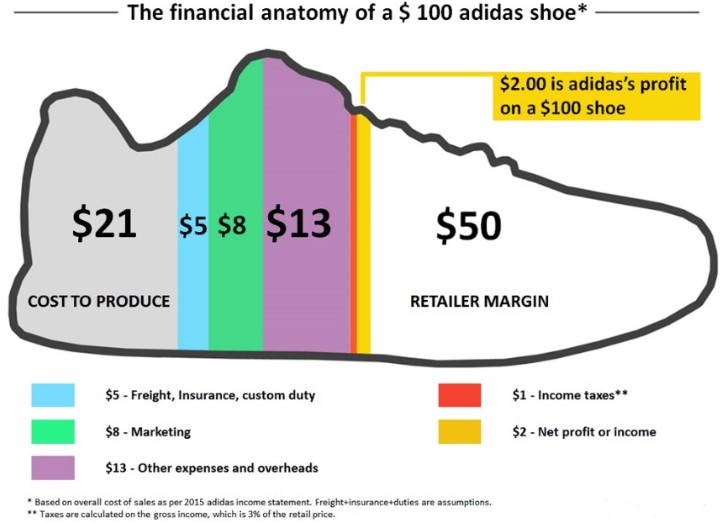
A practical example of the cost-plus pricing strategy can be seen in the case of Adidas shoes. Let’s consider a pair of Adidas shoes with a cost of production amounting to $48, encompassing manufacturing, insurance, marketing, and other expenses. In this scenario, if the retailer aims to secure a profit of $50 per sale, the shoes are marked up to $100. This approach ensures that the retailer reaches its profit margin goal while allowing Adidas to obtain a $2 profit per pair of shoes sold.
10. Competition-Based Pricing Strategy Example: Mailchimp VS Sendgrid

Mailchimp and SendGrid, both active in the domain of newsletter building and management platforms with similar product features, provide an example of a competition-based pricing strategy. In a market brimming with alternatives, they offer their paid services with comparable capabilities at $20 per month for Mailchimp and $19.95 per month for SendGrid for the essentials package.
11. Value-Based Pricing Strategy Example: Apple
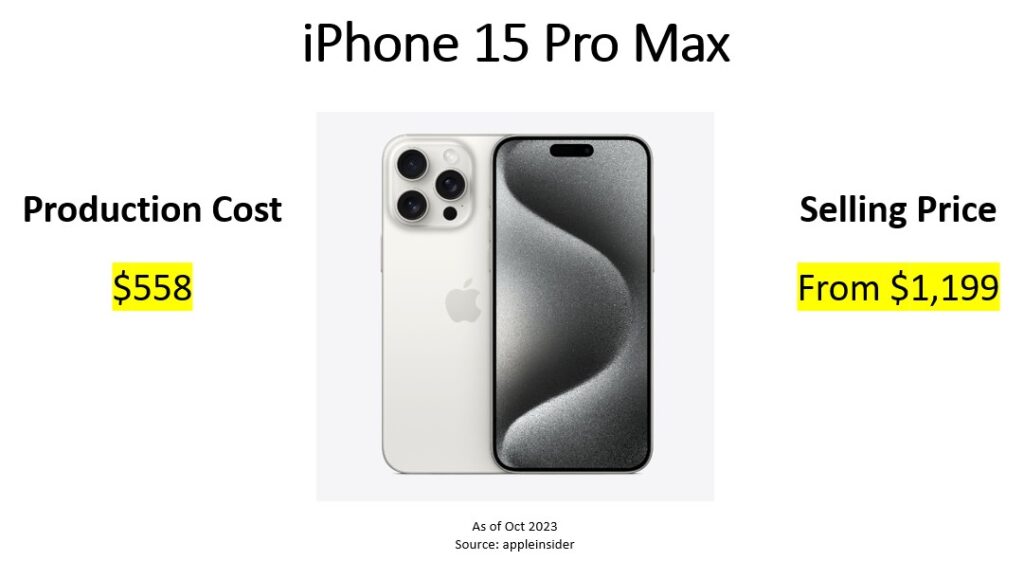
Apple’s pricing strategy serves as a compelling example of value-based pricing. The tech giant’s product pricing is meticulously crafted to align with key customer values such as simplicity, ease of use, and design excellence. This strategy is designed to cater to a market that values quality and a seamless user experience. Customers are willing to pay a premium over competitors’ mobile phone prices to enjoy these sought-after benefits.
According to Apple Insider, the iPhone 15 Pro Max is offered at a starting price of $1,199. This significant price point far surpasses the production cost of $558. The disparity between production costs and retail prices underscores Apple’s successful execution of a value-based pricing strategy, where customers willingly invest in products that offer the unique attributes and experiences they value most.
12. Dynamic Pricing Strategy Examples: Skyscanner, Uber & Hopper
Dynamic Pricing Based on Groups Example: Skyscanner
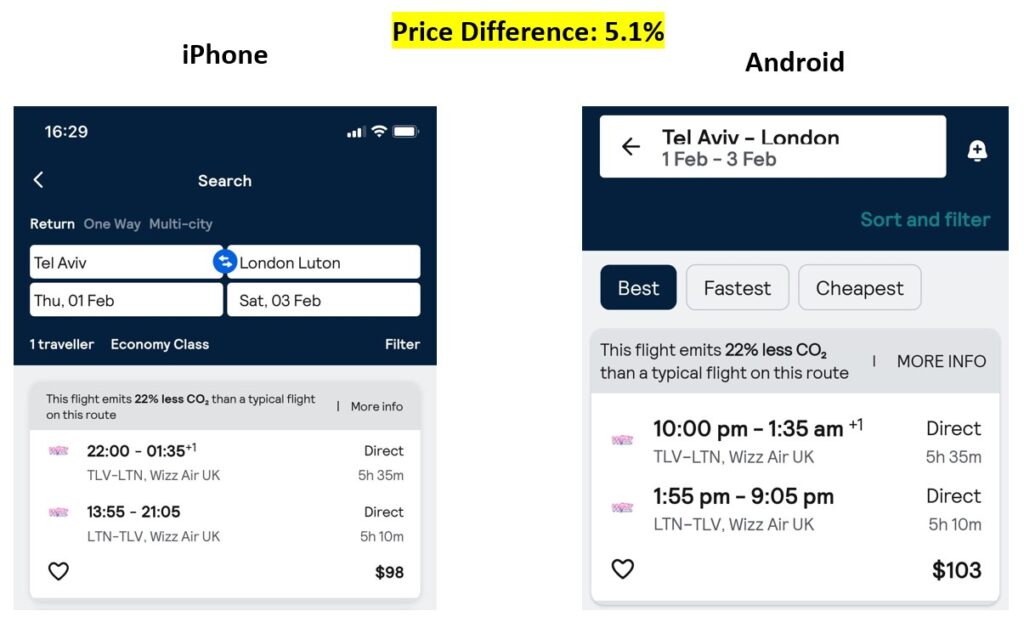
Dynamic pricing, as utilized by platforms like Skyscanner, tailors flight offers to user-specific data. For example, when searching for a round-trip flight from Tel Aviv to London, varying prices were observed for Android and iPhone users, with the Android user receiving a $103 offer and the iPhone user a $98 deal. This pricing variability arises from the algorithm’s consideration of factors such as device type, browsing history, and location, all aimed at aligning offers with user preferences and anticipated willingness to pay.
Dynamic Pricing Based on Time Example: Uber

Uber’s dynamic pricing strategy keeps fares responsive to changing demand. It adjusts rates based on factors like route length, traffic, and rider-driver demand, which means prices can temporarily increase during busy times like Friday and Saturday nights or rush hours. This encourages more drivers to get on the road. Uber keeps you informed of fare increases through the app. As more drivers join, demand evens out, and fares return to normal. Dynamic pricing ensures enough drivers are available to meet rider needs, giving you the choice to ride during peak times or wait for regular rates to resume.
Dynamic Pricing Based on Peaks: Hopper
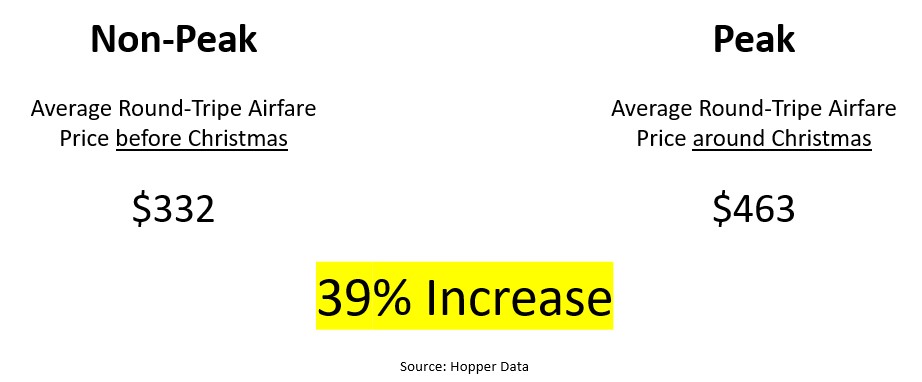
Hopper’s pricing strategy, exemplified by its dynamic response based on peaks, demonstrates how airlines adjust fares during peak holiday seasons. Travelers preparing for Christmas will notice a 39% increase in round-trip flight prices compared to the previous year, with an average domestic airfare cost of $463.
This dynamic pricing example is driven by factors like rising jet fuel costs, reduced flight schedules, and pent-up travel demand. Hopper’s data also offers a cost-saving strategy, suggesting that travelers can significantly reduce expenses by choosing specific weekdays before Christmas for their trips. This pricing strategy showcases how airlines adeptly manage prices based on the ebb and flow of demand, providing travelers with more economical options during peak travel times.
13. Freemium Pricing Strategy Examples: Canva, Skype, Spiceworks & Capterra
Traditional Freemium Pricing Strategy Example: Canva
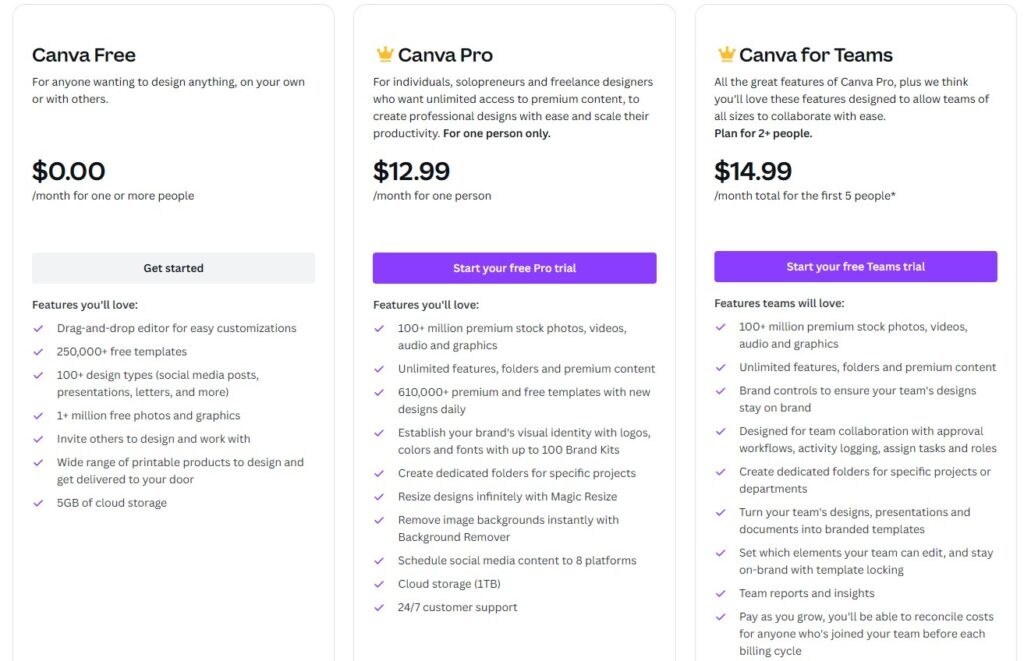
Canva serves as a classic freemium pricing strategy example. They offer both free and paid versions, luring users with the free option that includes essential design tools and templates, subtly encouraging them to upgrade for advanced features. This approach aligns with the traditional freemium model, introducing users to the platform’s value through a free offering and enticing them to explore premium benefits.
Freeware-Based Freemium Pricing Strategy Example: Skype
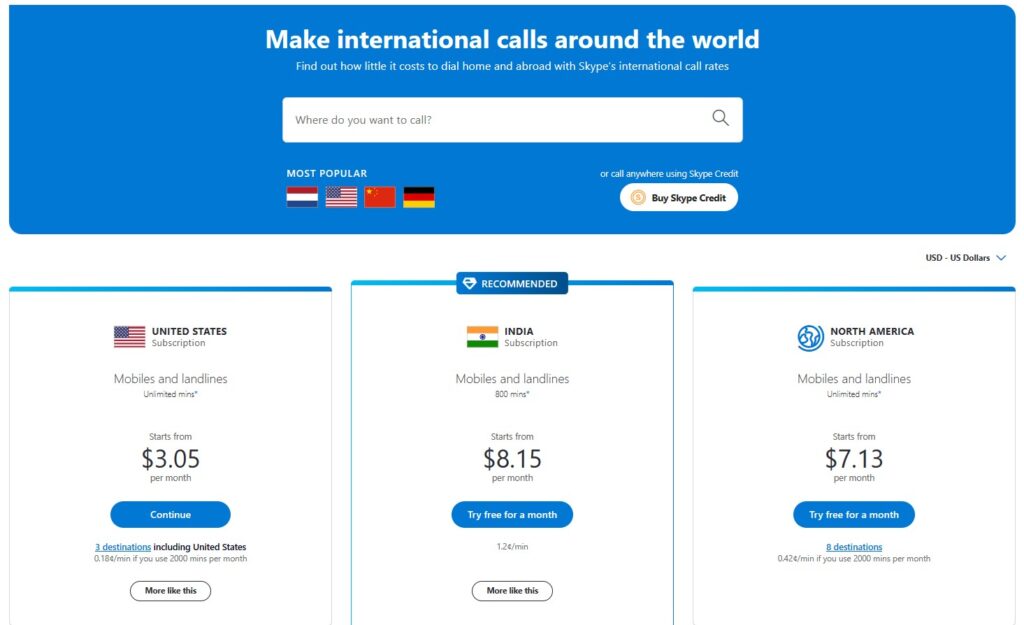
Skype provides a prime example of a freeware-based freemium pricing strategy. While the core messaging features are free, users can opt to pay a monthly fee for outbound calls to regular phone numbers internationally. This dual-pricing approach allows users to enjoy essential communication tools for free while offering a premium international calling service for a fee, illustrating a freeware-based freemium strategy.
Network Effect-Based Freemium Pricing Strategy Example: Spiceworks
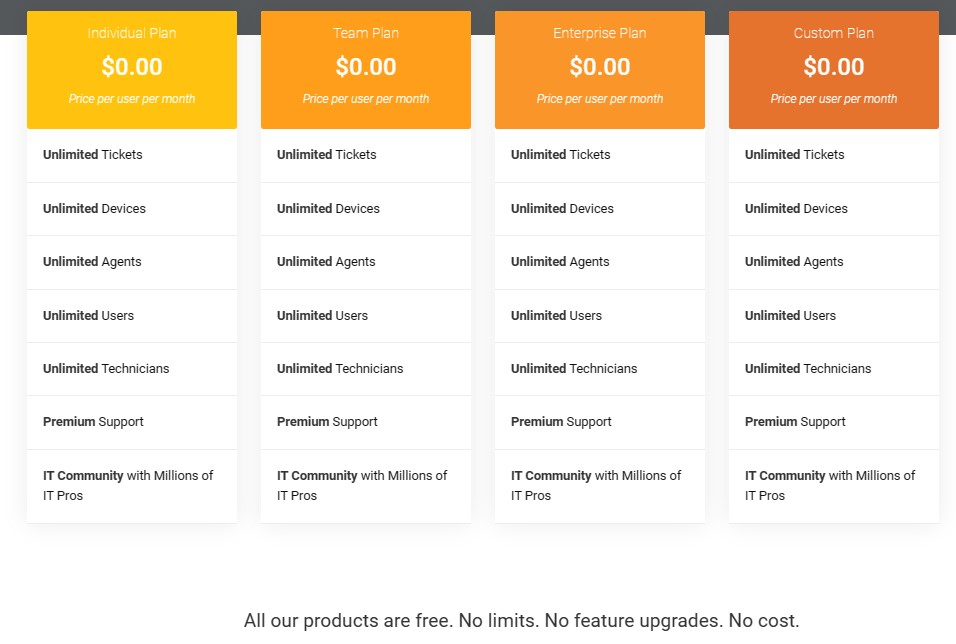
Spiceworks is a prime example of Network Effect-Based Freemium. They provide all their services for free, while revenue is generated through in-product advertising. This model leverages network effects, with the platform becoming more valuable as more users join and engage, making it an attractive space for advertisers.
Platform-Based Freemium Pricing Strategy Example: Capterra
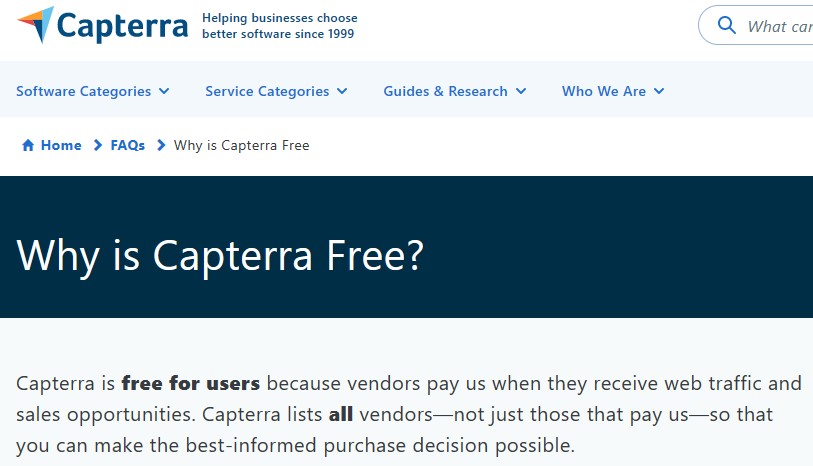
Capterra demonstrates a platform-based freemium model by connecting potential software buyers with a variety of software companies. The service, available for free to customers, monetizes its operations by charging software companies fees for driving traffic and sales promotions.
Pricing Strategy in Marketing
The implementation of pricing strategy in marketing often relies on the art of behavioral economics and psychological pricing methods. These tactics go beyond mere numbers, delving into the intricate psychology of consumer behavior and perception. When seamlessly integrated with other pricing strategies like cost-plus pricing, value-based pricing, skimming pricing, penetration pricing, and dynamic pricing, psychological pricing becomes a potent tool in the marketer’s arsenal.
Its power lies in its ability to strategically position products, captivate the attention of target customers, and work diligently toward achieving revenue and profitability objectives. In the realm of marketing, understanding and harnessing the influence of psychological pricing is integral to making informed pricing decisions that drive success.
Let’s explore examples of the use of pricing strategies in marketing:
The 99 Effect, Left-Digit Effect and Charm Pricing
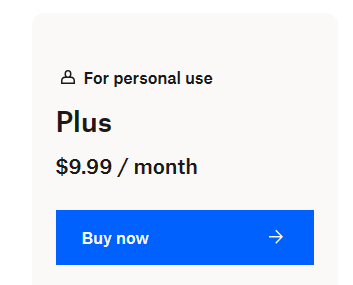
The 99 effect, a key element of pricing strategy in marketing, involves pricing products or services with amounts ending in .99 rather than rounding up to the nearest dollar. This tactic, as seen, for example, with Dropbox, capitalizes on consumer psychology, as people often perceive a price of $9.99 as significantly lower than $10.00, despite the mere one-cent difference. Research shows that this strategy can significantly impact consumer behavior, highlighting the powerful role of psychological pricing in shaping purchasing decisions.
Additionally, the “left-digit effect” is a cognitive bias that causes people to focus on the leftmost digit of a number. This means that a price of $9.99 is perceived as significantly cheaper than a price of $10.00, even though the difference is only one cent. According to research, consumers tend to round down to the nearest dollar when making purchasing decisions, which means that a price that ends in 99 cents is more likely to be perceived as a bargain.
Charm pricing is another notable component of marketing pricing strategies. It strategically employs odd numbers, such as 9 or 5, in place of rounded figures to instill a sense of enhanced trustworthiness and memorability. This approach aims to foster repeat business and bolster brand credibility by effectively harnessing consumer psychology.
Artificial Time Constraints

A clever psychological pricing strategy in marketing, serve to instill a sense of urgency in customers, compelling them to make swift purchasing decisions. By imposing time limits on offers or promotions, businesses create a perception that opportunities are fleeting, tapping into consumers’ fear of missing out (FOMO) and their desire to seize a good deal. Some classic examples of artificial time constraints include:
- Limited-time offers: A SaaS software offers a 20% discount valid for a couple of days, pushing users to buy now or risk losing the discount.
- Countdown timers: A travel website displaying a timer with only a few rooms left at a discounted rate, triggering quick bookings fueled by the fear of missing out.
These artificial time constraints generate a psychological dynamic that encourages immediate action, a potent tool for businesses to increase sales and establish an aura of exclusivity around their offerings.
Price Anchoring
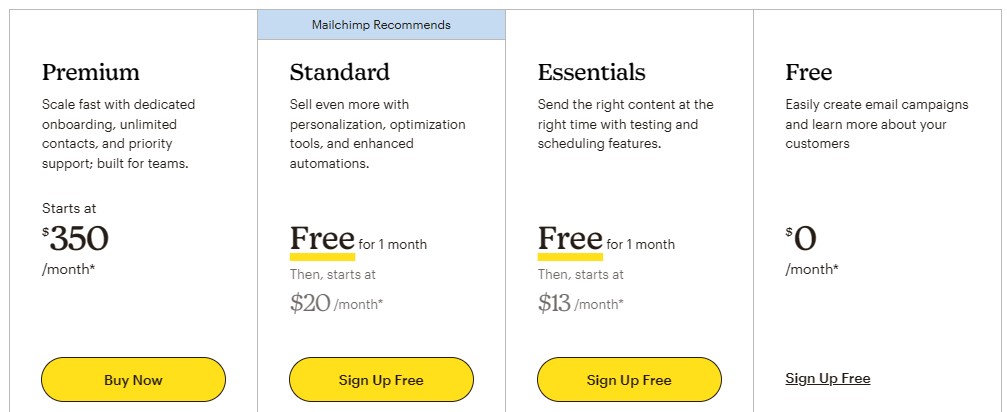
Price anchoring is a clever pricing strategy in marketing that leverages the concept of relativity to make certain offers appear more attractive. Imagine you’re browsing through an email marketing service provider’s pricing page, like MailChimp. On this page, the left column features their Premium Plan, priced at $350 per month. Positioned beside it are the Standard and Basic Plans on the right, priced at $20 and $13 per month, respectively.
The presence of the Premium Plan as the anchor on the left makes the other offers on the right seem much more affordable and appealing in comparison. Customers are more likely to be drawn to the Standard or Basic Plans due to their comparatively lower prices, thanks to the clever use of price anchoring.
Innumeracy
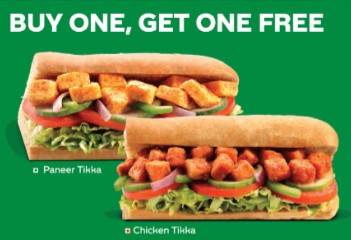
Innumeracy is a curious quirk in consumer behavior where people often struggle to grasp basic mathematical concepts when making purchasing decisions. For instance, according to research, when given the choice between “Buy one get one free” (BOGO promotions) and “50% off any two items,” the majority of consumers lean towards the first option, even though both options are essentially the same mathematically. This demonstrates how our understanding of math can sometimes waver when we’re shopping. Innumeracy influences pricing strategies in various ways, from double discounting to coupon designs and the allure of percentage discounts.
Decoy Pricing
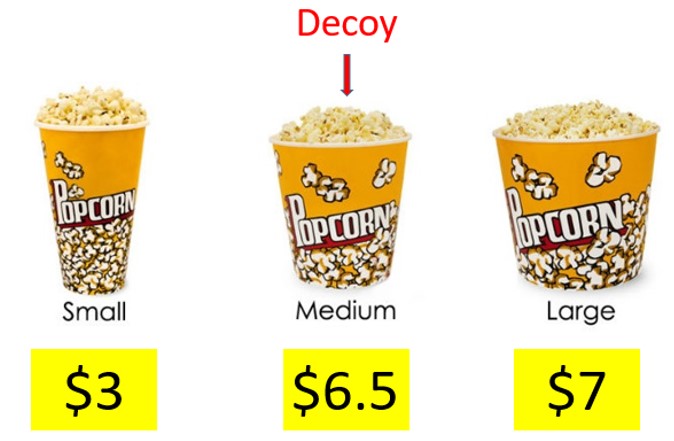
The decoy pricing strategy in marketing harnesses the “decoy effect,” where a third option is introduced to influence preferences between two others. Take, for example, a movie theater selling small popcorn for $3, medium for $6.5, and large for $7. Here, the medium option at $6.5 serves as the decoy. Its purpose is to encourage customers to choose the large popcorn for $7 by making it seem like a more attractive deal.
Center-Stage Effect
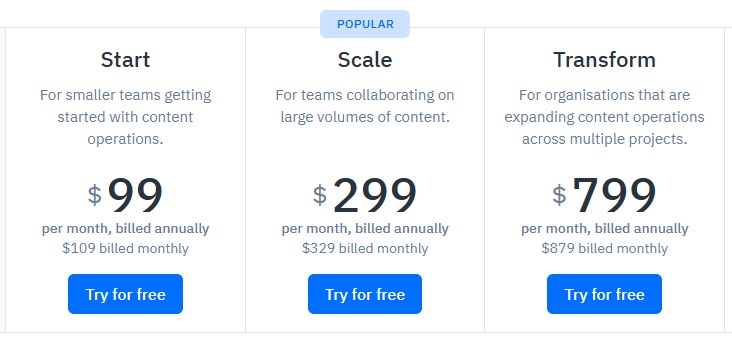
Center-stage effect is a robust psychological pricing strategy hinging on the principle that consumers are naturally drawn to the middle option when presented with various choices. For companies such as GatherContent, this means strategically positioning their preferred product or pricing option in the center to guide consumer choices. It’s a powerful tool, particularly when consumers have limited information about product features and prices, making it effective for businesses offering multiple pricing options.
Industry-Based Pricing Strategy
Let’s explore pricing strategies across diverse domains, from SaaS and B2B to e-commerce, digital products, physical goods, agencies, and services, discovering tailored approaches that balance profitability and value delivery.
SaaS Pricing Strategy
For Software as a Service (SaaS) pricing, it’s crucial to consider the subscription-based model, value proposition, and competitive landscape. To set an effective SaaS pricing strategy, you can explore approaches such as value-based pricing, tiered pricing, and usage-based pricing. These methods help you align prices with the perceived value your service offers while accommodating various customer needs. This balance between profitability and delivering value is essential in the world of SaaS.
B2B Pricing Strategy
When it comes to Business-to-Business (B2B) pricing, you need a strategy that caters to the unique demands of corporate clients. B2B pricing should consider factors like the complexity of the offering, customer segments, and long-term relationships. To craft a successful B2B pricing strategy, you can explore options such as value-based pricing, negotiated pricing, and volume-based pricing.
These approaches allow you to tailor prices to the specific requirements and purchasing behaviors of your business customers, ensuring both profitability and enduring partnerships.
Ecommerce Pricing Strategy
Crafting a successful pricing strategy in the realm of e-commerce involves a delicate balance between understanding your customers’ willingness to pay for your online offerings and the costs associated with procuring or creating these products. Furthermore, considerations should encompass the expenditure on online marketing campaigns, the ease with which customers can access similar products on competitors’ e-commerce platforms, and the need for strategic pricing models.
When it comes to pricing e-commerce products effectively, you can explore a range of strategies, including competition-based pricing, cost-based pricing, value-based pricing, dynamic pricing, freemium pricing and penetration pricing.
Digital Product Pricing Strategy
Pricing digital products demands a distinctive strategy due to the intangible nature of these offerings, such as software, online courses, and e-books. Unlike physical products, there are no unit production costs, making room for flexible pricing. In the digital realm, your pricing should align with your brand identity, industry benchmarks, and most importantly, the perceived value your product delivers to customers.
For this, I advocate employing three effective pricing strategies: competition-based pricing, which gauges the market; freemium pricing, allowing free access with premium upgrades; and value-based pricing, where the value proposition reigns supreme.
Physical Product Pricing Strategy
When it comes to pricing physical products, you face unique challenges due to the tangible nature of these goods and the associated costs like manufacturing, shipping, and storage. A well-crafted physical product pricing strategy should account for these factors while striving to optimize profitability and remain competitive in the market. To achieve this balance, you can explore various pricing strategies such as competition-based pricing, cost-plus pricing, value-based pricing, and premium pricing.
Agency Pricing Strategy
Developing a successful pricing strategy for an agency requires a deep understanding of clients’ budget constraints and the value delivered by your services. Considerations should include industry standards, the distinct value propositions you offer, client relationships, and your market positioning.
Various effective pricing strategies for agencies are available, such as hourly pricing, project-based pricing, value-based pricing, retainer pricing, performance-based pricing, competitive pricing, and bundled pricing. By thoughtfully selecting and applying these strategies, agencies can tailor their pricing to meet clients’ needs, enhance profitability, and excel in a competitive market.
Services Pricing Strategy
Designing a robust pricing strategy for services requires a deep understanding of your target market, the unique value your services bring, and industry standards. Key factors include your client base, service demand, market positioning, and additional benefits. Recommended pricing strategies for services include hourly pricing, project-based pricing, value-based pricing, retainer pricing, performance-based pricing, competitive pricing, and bundled pricing. By thoughtfully applying these strategies, service providers can align their pricing with client needs, boost profitability, and stay competitive.
How to Develop an Effective Pricing Strategy
Pricing strategy is both an art and a science, requiring careful consideration and a systematic approach. To develop an effective pricing strategy, you need to blend insights from data analysis with a deep understanding of your customers and the competitive landscape. Here’s your step-by-step guide:
Step 1: Pricing Potential Evaluation
Begin by assessing your pricing potential. Dive into the factors that can influence your pricing strategy, such as geographical market specifics, operating costs, inventories, demand fluctuations, competitive advantages, and customer demographics. This initial analysis provides the foundation for your pricing framework.
Step 2: Know Your Buyer Personas
Effective pricing is all about aligning with the expectations of your target customers. Identify your buyer personas, understanding their Customer Lifetime Value, Willingness to Pay, and Pain Points. This process may involve customer interviews and close collaboration with your sales team to pinpoint the characteristics of your most promising leads.
Step 3: Drawing Wisdom from Historical Data
The past holds valuable lessons. Study your historical pricing strategies, examining closed deals, churn data, and product sales associated with different pricing models. Learning from your history will guide your future pricing decisions.
Step 4: The Balance Between Value and Business Goals
Strike a harmonious balance between profitability and customer satisfaction. Your pricing strategy should not only increase profitability but also enhance cash flow, penetrate the market, expand market share, and improve lead conversion rates. This equilibrium is the key to long-term success.
Step 5: Decode Competitor Pricing
Positioning your offerings effectively necessitates a deep understanding of your competitors’ pricing strategies. You have two primary options: undercut your competitors’ prices if they charge more for a similar product, or emphasize the value you offer to justify a higher price. Comprehensive competitive analysis will unveil their strengths and weaknesses, providing valuable insights for your pricing decisions.
Step 6: Value Metrics, Customer Profiles, and Experimentation
Moving beyond the foundational steps, there are more advanced tactics to fine-tune your pricing strategy:
- Value Metrics: Your “value metric” is what you charge for, and it must closely align with the essence of the value your product delivers to customers. Getting this metric right is crucial, as it can significantly impact customer retention and revenue growth.
- Customer Profiles: Go beyond generic personas and create detailed customer profiles based on characteristics like the most valued features, willingness to pay, lifetime value, and customer acquisition costs.
- User Research and Experimentation: An effective pricing strategy is dynamic. Regularly assess and fine-tune your pricing, packaging, and discounting strategies through user research and experimentation to meet the evolving needs and preferences of your customer segments.
Remember, there is no one-size-fits-all approach to pricing strategy. Your journey may commence with foundational elements, but adapt your priorities based on your business’s unique circumstances. Crafting an effective pricing strategy is an ongoing process, and with these steps, you can lay a robust foundation for your pricing strategy and set your business on the path to success.
Summary
Creating an effective pricing strategy may seem complex at first, considering factors like competitors, production costs, and customer demand. Keep in mind that pricing is an iterative process, and perfect pricing may require experimentation. By adapting your strategy as needed, you can set prices that resonate with customers and maximize profits.
For an enhanced pricing approach, consider implementing a customer experience strategy to boost perceived value and offer convenient payment options for efficient revenue collection.
In summary, pricing strategy is a dynamic process that, when finely tuned to your specific business needs, can lead to increased profitability and sustainable growth.
Pingback: Digital Marketing Strategy - The Complete Guide For 2024